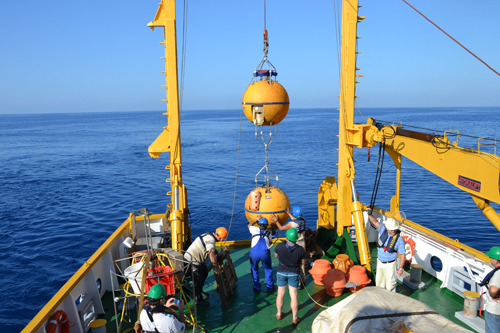Assessment of Total Organic Carbon and Thermal Maturity of the Unconventional Shale Gas Resources: Experimental and Digital-Rock Approaches
Unconventional hydrocarbon resources continue to engender increasing attention as potential energy sources. This is reflected in the ongoing research aiming at gaining a better understanding of potential unconventional reservoirs. In this note, we describe a study focused on an organic-rich, potential gasproducer shale from Saudi Arabia, namely the Qusaiba Shale. The study aims, in particular, to quantify organic matter content, mineral content, and porosity using digital-rock methodology validated by laboratory measurements. Rock plugs are selected from whole cores representative of the organic-rich, Qusaiba Shale. The core plugs are first digitized using high-resolution CT scan and the obtained 3D models are segmented to separate the total organic content (TOC) volume, rock matrix, and pore network. X-ray diffraction (XRD), X-ray fluorescence (XRF), and quantitative scanning electron microscopy (SEM) analyses are undertaken to determine elemental and mineralogical composition. To characterize porosity at a level adequate for shale, the samples also undergo SEM imaging, as well as nuclear magnetic resonance (NMR) analysis. Subsequently, numerical upscaling is applied, and comparison of numerical and experimental results is performed. Petrography and mineralogy analyses show that the major mineral components of the Qusaiba Shale samples are silica, feldspars, mica, clay, and pyrite. SEM imaging reveals that, at the nanoscale, the samples are characterized by a variety of pore types, sizes, and morphologies. Porosity comes in two types: intergranular and organic, with intergranular porosity being the dominant type. Compaction and horizontal alignment of the detrital mineral grains control the development of intergranular porosity while the distribution of organic particles, as well as their maturity, are the key factors controlling the formation of organic porosity. Integrating SEM images, high-resolution X-ray scans, and NMR measurements provides the information utilized to quantitatively determine the mineral and organic contents of the samples. Preliminary results exhibit a consistent agreement between the upscaled digital-rock-based estimates and the experimental measurements. 2 IPTC-19085-MS The main contribution of this study is an affordable, Digital Rock Physics (DRP)-based characterization of the organic content, mineral content, and pore-network structure of samples representative of Saudi Arabia's potential shale gas reservoirs that is consistent with laboratory measurements.

